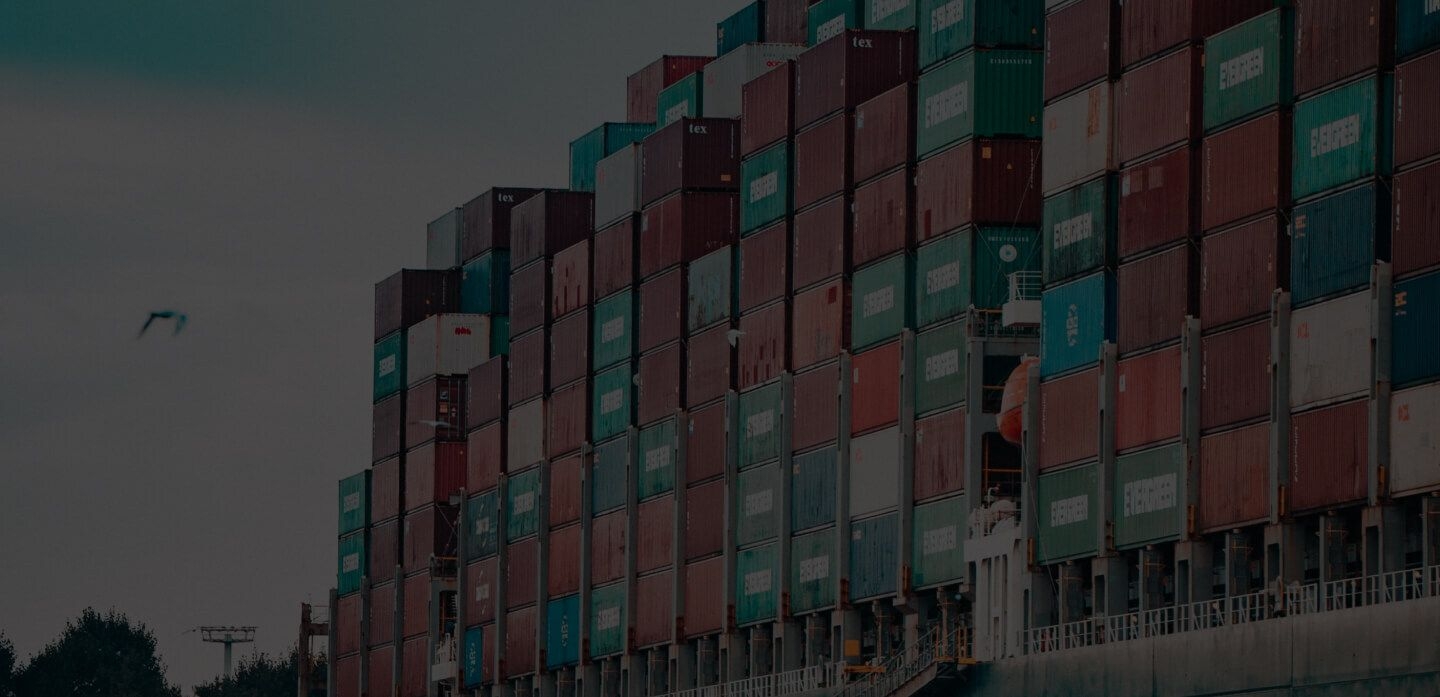
Ocean & Air Freight Shipping From the United States to Thailand
Information and quote from the United States to Thailand for LCL, FCL and Air shipping
- Compare Thousands of Quotes from Multiple Carriers
- Trusted by 10,000+ Customers
- 40,000+ Tradelanes Covered Globally



The trade relationship between the United States and Thailand has continued to flourish over the years. In 2022, the U.S. exported $15.8 billion worth of goods to Thailand, an increase of 25.1% from the previous year.
Despite their distinct economic and cultural backgrounds, these nations have emerged as significant trade partners, with trade corridors that benefit both sides. In this article, we’ll explore your ocean and air freight shipping options for shipping goods from the United States to Thailand.
What Are the Options for Shipping Freight From the United States to Thailand?
You can ship freight from the United States to Thailand via ocean or air freight.
Ocean Freight From the United States to Thailand
Ocean freight is the most cost-efficient and flexible way to ship goods from the United States to Thailand. It can accommodate almost any type of cargo you need to transport and even offers two choices when it comes to container shipping: less-than-container load (LCL) and full-container load (FCL).
LCL is best for small shipments because of the consolidation process. Shippers’ goods are consolidated with cargo belonging to other sellers and shipped together in one container. Each shipper then only pays for the space their cargo occupies, making it an economical option for small cargo volumes.
FCL, on the other hand, is ideal for larger volumes of cargo. The shipper rents the space in an entire container for their goods alone, which allows them more control and security for their shipment. Shipping large, heavy cargo is the best way to maximize container space with FCL.
Air Freight from the United States to Thailand
Another way to ship goods from the United States to Thailand is air freight. This is the fastest way to ship cargo worldwide, but it’s also the most expensive. Air freight is preferred by shippers for time-sensitive and perishable cargo and high-value goods because of the security provided by stringent airport regulations.
How Much Does it Cost to Ship Cargo From the United States to Thailand?
The cost of shipping cargo from the United States to Thailand will depend on the following:
- Your choice of ocean or air shipping
- Your preference for door-to-door, port-to-port, port-to-door, or door-to-port shipment
- Your consignment’s weight, volume, and size
- Weight and size limits
For an accurate estimate of your shipping costs, utilize our freight costs calculator. Below, you'll find the current cost for shipping a standard 20-foot container from the United States to Thailand:
TRADE LANE RATES
Freight Shipping Cost from the United States to Thailand for a 20-foot Container
How long does it take to ship cargo from the United States to Thailand?
The transit time for goods shipped from the United States to Thailand is mainly determined by your selected international shipping method. However, other influencing factors include:
- The season of shipment (peak or low season)
- Whether the shipment route is direct or not
- The trade lane's popularity
- Geopolitical instability
- Possible incidents at any port
How long does it take to ship cargo by sea from the United States to Thailand?
Ocean freight from the United States to Thailand takes 15-50 days.
How long does it take to ship cargo by air from the United States to Thailand?
Air freight from the United States to Thailand takes around 2-8 days.
For the most accurate estimate, we recommend using our transit time calculator.
Customs Clearance in the United States and Thailand
When your goods arrive from the United States to Thailand, they will go through the customs clearance process. This requires that you prepare and submit the following documents beforehand:
- A commercial invoice
- A packing list
- A certificate of origin
- A letter of credit or other payment terms (depending on the contract between the parties involved)
- A bill of lading for ocean freight or an Airway Bill for air freight
Take a look at our full documents list for examples of each customs clearance document.
Should You Choose Ocean Freight or Air Freight?
The choice between ocean and air freight should be made considering your needs, priorities, and cargo requirements. To help you decide, here are some things to take into account:
Ocean Freight
Ocean freight is right for you if you value cost efficiency and flexibility and don’t mind that your cargo arrives in Thailand longer than expected. When you go with ocean freight, you must choose whether to ship with LCL or FCL.
Considerations for LCL Freight Shipping
LCL is the best shipping option for cargo that is:
- Small in size and quantity
- Lightweight
- Suitable for consolidation with cargo belonging to other shippers
- Not delicate, fragile, or high-value
- Not requiring special handling or movement
Considerations for FCL Freight Shipping
You should opt for FCL if your cargo is:
- Large in size and quantity
- Heavy or overweight
- Not suitable for consolidation with cargo belonging to other shippers
- Delicate, fragile, or high-value
- Requiring special handling or movement
Air Freight
If you need your cargo to arrive in Thailand fast, you should choose air freight. An air freight shipment to Thailand only takes 2-8 days to complete, making it great for time-sensitive and perishable goods. It’s also the best choice if you are shipping high-value cargo, as strict airport regulations can guarantee the security of your shipment.
Note, however, that air freight can get expensive. It’s also not able to ship all types of goods, and there is quite a list of restricted and prohibited goods you cannot ship by air.
Ocean Cargo Port Guide
Cargo ports of origin in the United States
Port of Virginia
The Port of Virginia is located on the eastern coast of the United States, providing direct access to the Atlantic Ocean. It is the eighth busiest port in the U.S., handling over 2 million TEUs annually. It is also the busiest, seeing 11.6% of the coast’s total throughput.
Port of Charleston
The Port of Charleston is famous for its efficient and environmentally friendly operations. It is located in South Carolina, United States, and is the 8th busiest container facility in the country. The port boasts five public terminals that handle containers, motor vehicles, and cruise ships.
Port of Miami
The Port of Miami is located in Florida, United States. It is a maritime powerhouse, handling over 10.2 million tonnes of cargo annually. It is the closest harbor in the U.S. to the Panama Canal and the only port in the country to handle neo-Panamax vessels.
Cargo ports of arrival in Thailand
Port of Bangkok
The Port of Bangkok, also known as the Khlong Toei Port, is located on the Chao Phraya River in the Khlong Toei District of Bangkok, Thailand’s capital city. It used to be one of the world’s 100 busiest container ports, handling over 1.5 million TEUs annually.
Port of Bangpakong
The Port of Bangpakong is a multipurpose river port in the western part of Chachoengsao Province. It handles various cargo types, including dry and liquid, breakbulk, containerized, and manufactured steel products. The port boasts equipment that loads and discharges 13,500 tons of cargo daily.
Port of Chanthaburi
The Port of Chanthaburi is nine nautical miles from the mouth of Mae Nam Chanthaburi. It mainly handles rice, tobacco, pepper, fruit, dried fish, precious stones, and rubber shipments. It is also famous as a fishing destination, with boats and larger vessels able to anchor off berth.
Air Freight from the United States to Thailand: An airport guide
Airports of origin in the United States
Miami International Airport
Miami International Airport is the fourth busiest U.S. cargo airport, handling over 2 million tonnes of cargo per year. It boasts special equipment and facilities designed to handle large volumes of freight. It has 50 cargo carriers and is home to significant warehouses and logistical facilities.
Los Angeles International Airport
Los Angeles International Airport is one of the busiest passenger and cargo airports in the world. It handles over 2 million tonnes of cargo annually and serves as a major hub for international trade. The airport’s cargo operations bring in billions of dollars in economic activity.
Louisville Muhammad Ali International Airport
Louisville Muhammad Ali International Airport is the third busiest cargo airport in the US. It is home to UPS Worldport, the largest package sorting facility in the world, and offers direct flights to major cities worldwide.
Airports of arrival in Thailand
Suvarnabhumi International Airport
The Suvarnabhumi International Airport is the main international airport serving Bangkok, the capital of Thailand. It spans 3,240 hectares, making it one of the busiest airports in Southeast Asia. The airport is a regional hub for aviation, housing airlines such as Thai Airways International, Bangkok Airways, Thai AirAsia, and more.
Phuket International Airport
The Phuket International Airport is in the Mai Khao subdistrict, Thalang district, Phuket, Thailand. It’s 32 kilometers from downtown Phuket. The airport is a hub for Thai Airways International, Thai AirAsia, Phuket Air, Orient Thai Airlines, New Gen Airways, City Airways, and Happy Air.
Chiang Rai International Airport
The Chiang Rai International Airport serves northern Thailand’s Ban Du subdistrict in the Mueang Chiang Rai district. It is located 8 kilometers from the city center. The airport is a hub for Thai AirAsia and Thai VietJet Air.
About Us
Why Ship From the United States to Thailand With iContainers?
Why Us?
Shipping cargo requires considering various factors, such as the season, the size of the cargo, the shipping method, and the origin and destination.
With years of industry expertise, iContainers combines traditional freight forwarding services with advanced technology for your convenience. Our digital platform allows you to oversee your entire shipment—from requesting a quote to booking and tracking your cargo—all from your mobile device.
Feel free to contact us for a free quote at any time. We are always available to provide the information you need.